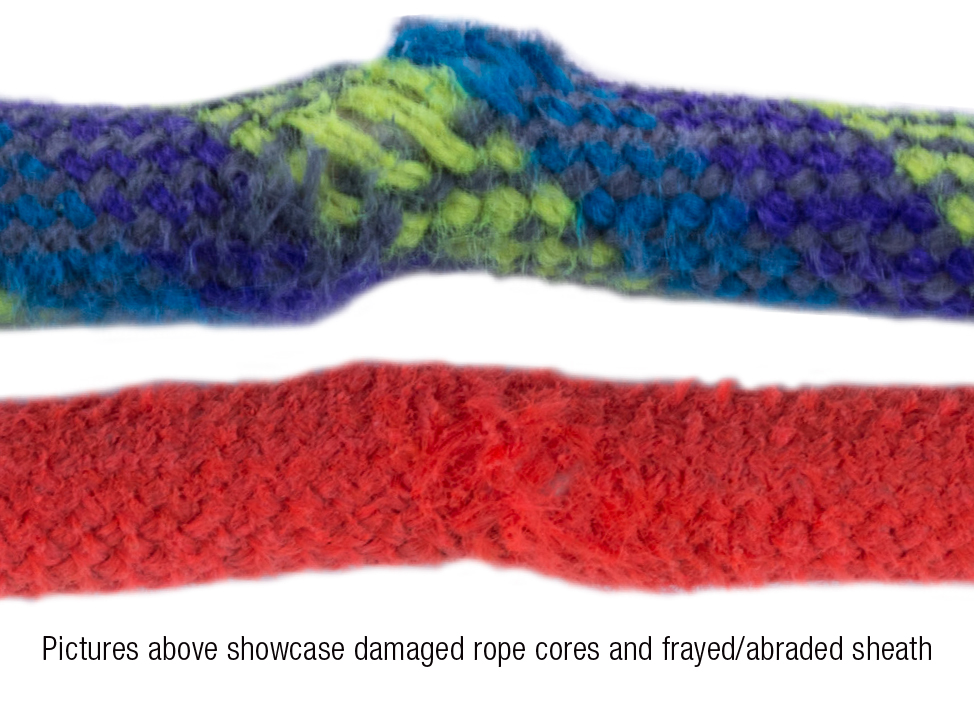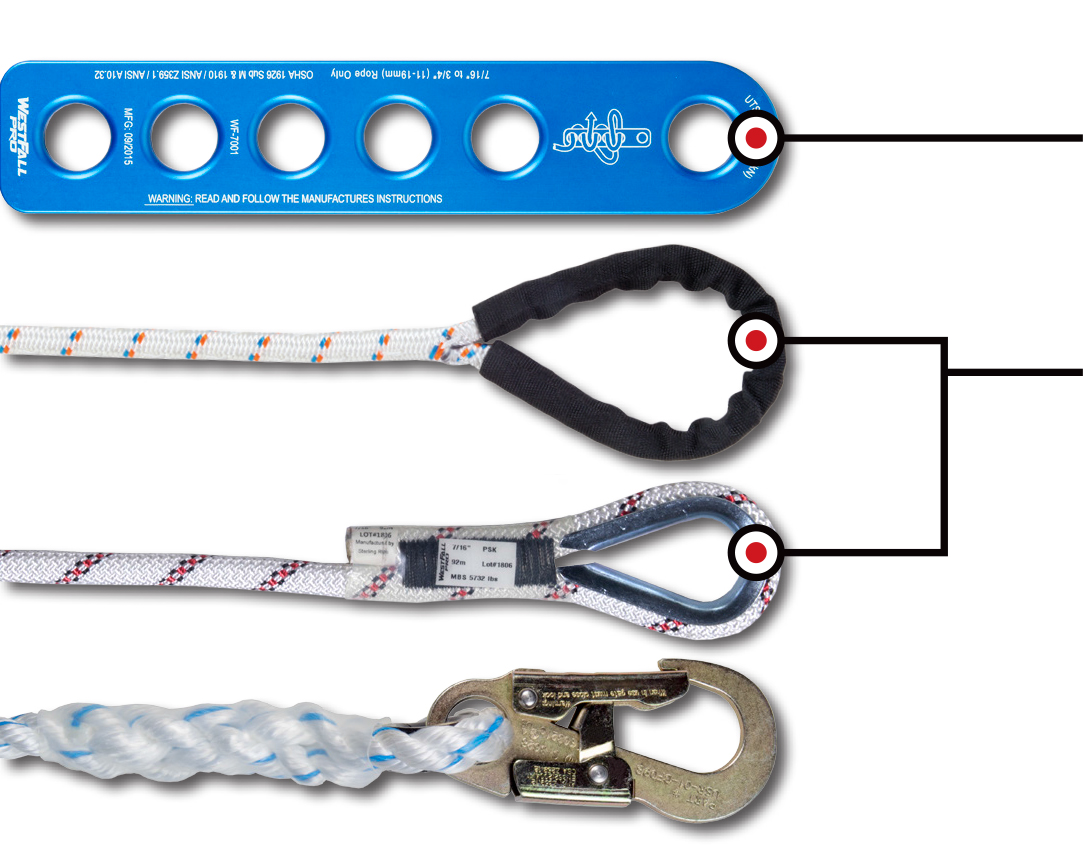

Knots
While tying knots is a very important skill to have when working with rope, it's equally important to recognzie the effect they have. Knots can seriously decrease the overall strenght of the rope, not only while knot is tied in the rope, but even after the knot has been untied. This is due to primping and twisting that is often irreversible.
Knots can decrease rope strength by up to 50%, which could be catastrophic in a life safety or overhead lifting and rigging scenario. Studies have shown that a figure 8 knot, one commonly used to create a looped termination at the end of a rope, causes ropes to break at 75-80% of their typical strenght. This decrease in MBS could be enough to put the capacity below required safety factors.
A common reason knots are tied in ropes is to create an attachement point to secure a rope to a structure or object. There are other options available, which do not decrease the strength of the rope by nearly as much as a knot.
Retiring your Rope
Reasons to retire your rope immediately:
- Rope whose strength may have been compromised during use
- Rope which is subjected to uncontrolled or excessive loading
- Rope which is greater than 10 years old, regardless of history & usage
- Rope whose history and past usage you are uncertain about
- Rope that has been exposed to heat, direct flame, or excessive abrasion
Cut retired rope into short lengths to discourage future use - or discard it entirely. A retired rope should not be stored, kept, or maintained in such a way that it could inadvertently be used.


Termination Options
Termination Plates - A piece of hardware, typically made from milled aluminum, which has multiple holes. Rope is fed through these holes in a specific pattern, leaving the main hole at the end of the plate as an attachment point.
Factory Sewn or Spliced Eyes - Many rope manufacturers offer sewn eyes for kernmantle and double braid ropes, or hand spliced terminations for three strand ropes. These terminations are designed to drastically reduce the stress put on the rope to minimize strength loss. They also typically include a protective thimble or abrasion resistant sleeve to further protect the rope at the stress points.
Factory Installed Connectors - Rope manufacturers can also include hardware connection options. Snaphooks with swivels are included on many lifelines to make attachement even easier.